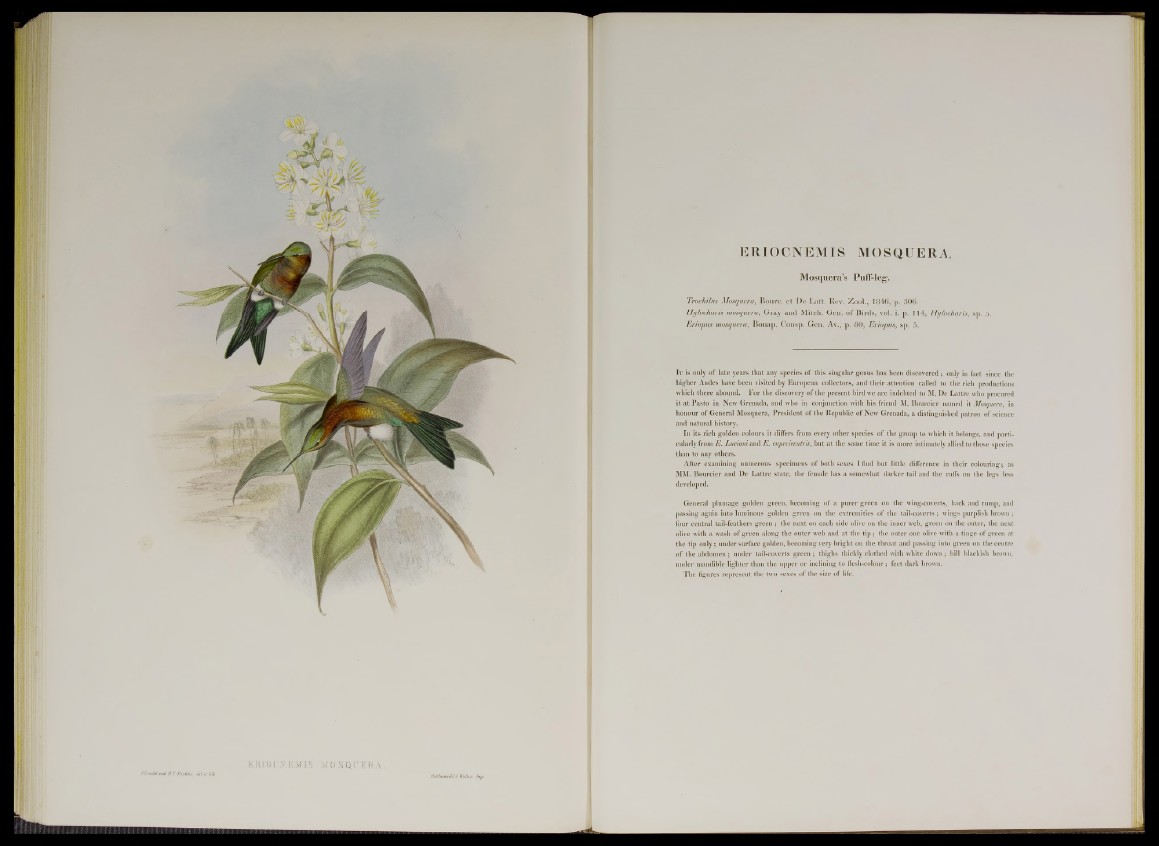
I .RIO | 8 8 MIS MO 1 g.'C EIR A.
J UtulJ onrt // C H irhtrr, tirl <1 h/h
m
ERIOCNEMIS MOSQUERA.
Mosquera’s Puif-leg*.
Trochilus Mosquera^ Bourc. e t D e Latt. Rev. Zool., 1846, p. 306.
Hylocharis mosquera, Gray and Milch. Gen. o f Birds, vol. i. p. 114, Hylocharis, sp. 5.
Eriopus mosquera, Bonap. Consp. Gen. Av., p. 80, Eriopus, sp. 5.
It is only of late years that any species of this singular genus has been discovered; only in fact since the
higher Andes have been visited by European collectors, and their attention called to the rich productions
which there abound. For the discovery of the present bird we are indebted to M. De Lattre who procured
it at Pasto in New Grenada, and who in conjunction with his friend M. Bourcier named it Mosquera, in
honour of General Mosquera, President of the Republic of New Grenada, a distinguished patron of science
and natural history.
In its rich golden colours it differs from every other species of the group to which it belongs, and particularly
from E. Luciani and E . cupreiventris, but at the same time it is more intimately allied to those species
than to any others.
After examining numerous specimens of both sexes I find but little difference in their colouring; as
MM. Bourcier and De Lattre state, the female has a somewhat darker tail and the ruff’s on the legs less
developed.
General plumage golden green, becoming of a purer green on the wiug-coverts, back and rump, and
passing again into luminous golden green on the extremities of the tail-coverts ; wings purplish brown ;
four central tail-feathers green ; the next on each side olive on the inner web, green on the outer, the next
olive with a wash of green along the outer web and at the tip ; the outer one olive with a tinge of green at
the tip only; under surface golden, becoming very bright on the throat and passing into green on the centre
of the abdomen; under tail-coverts green ; thighs, thickly clothed with white down ; bill blackish brown,
under mandible lighter than the upper or inclining to flesh-colour; feet dark brown.
The figures represent the two sexes of the size of life.